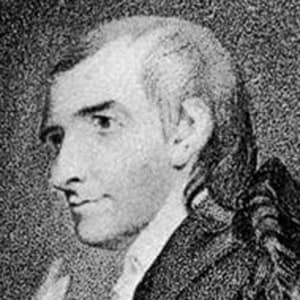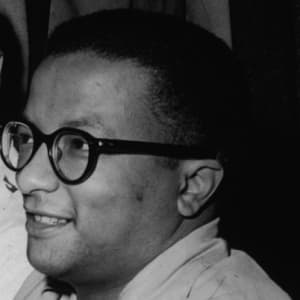
Francis Hopkinson
An ardent supporter of the American Revolution, Francis Hopkinson signed the Declaration of Independence and may have designed the U.S. flag.
Synopsis
Francis Hopkinson was born in Philadelphia, Pennsylvania, on October 2, 1737. He represented New Jersey in the Continental Congress, where he signed the Declaration of Independence. Hopkinson's interests extended beyond politics; he was a prolific composer and writer, also serving as a lawyer, judge, customs collector and treasurer, among other roles. He also claimed to have designed the U.S. flag. Hopkinson died in Philadelphia on May 9, 1791, at the age of 53.
Early Life
Francis Hopkinson was born to a well-off family in Philadelphia, Pennsylvania, on October 2, 1737. He graduated in the first class of the College of Philadelphia (which later became the University of Pennsylvania). A talented musician, Hopkinson composed many pieces over his lifetime, including "My Days Have Been So Wondrous Free" (1759)—the earliest surviving non-religious song composed in the American colonies.
Hopkinson became a lawyer in 1761, later working as a customs collector. In 1774, he was appointed to the governor's council in New Jersey. However, Hopkinson would soon join those who supported American independence.
Shaping a New Country
Hopkinson represented New Jersey at the Continental Congress in 1776, and was one of the 56 men who signed the Declaration of Independence. During the Revolutionary War, he served on the Navy Board at Philadelphia, as treasurer of the Continental Loan Office and as a judge for the Admiralty Court of Pennsylvania. Hopkinson also demonstrated his support for independence with songs like "The Battle of the Kegs," a popular Revolutionary War ballad that mocked the panicked British reaction when powder-filled barrels floated by their ships on the Delaware River.
After the fight for independence had been won, a Constitutional Convention was held in 1787 in order to create a stronger governing document for the new country. Some opposed a more powerful central government, but Hopkinson actively supported the new Constitution and argued in favor of the its ratification. He also wrote "The New Roof," an allegory that detailed why a new government (roof) was needed to protect its citizens. In the end, the new Constitution was adopted.
Flag Controversy
Though evidence shows that Hopkinson worked on the design of the U.S. flag, Congress turned down his request for "a quarter cask of the public wine" as payment for its creation. There is no definitive answer about who was responsible for the placement and style of the flag's stars, but Hopkinson's other design work, which includes contributing to the design of the Great Seal of the United States, lends credence to his bid for credit.
Death and Legacy
In 1789, George Washington nominated Hopkinson as a U.S. district judge for eastern Pennsylvania—a position that Hopkinson would hold until his death on May 9, 1791, at the age of 53. Hopkinson died in his native Philadelphia, leaving behind a widow and five children.
Hopkinson's lifetime output included inventions, musical compositions and writing that ranged from satire to serious essays. Most importantly, having signed the Declaration of Independence, worked on the U.S. flag and supported ratification of the Constitution, his contributions to the United States live on to this day.




